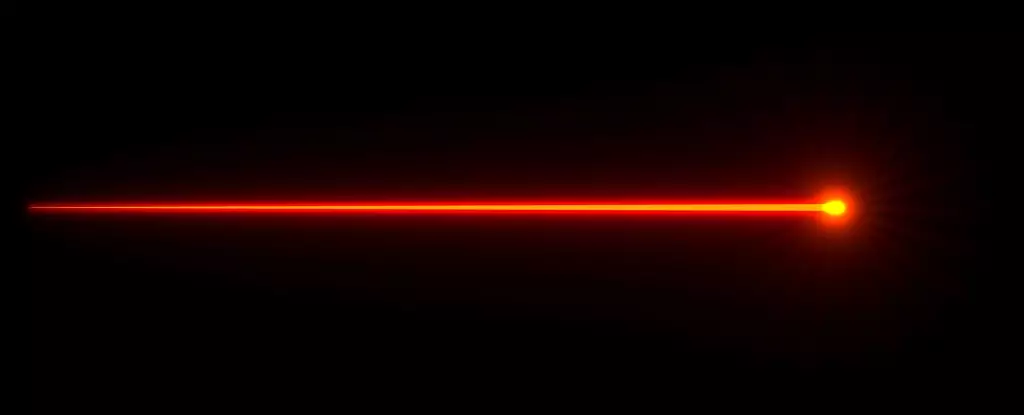The aspiration to reach distant stars remains one of humanity’s most ambitious dreams. With advancements in technology and a better understanding of physics, researchers are actively exploring innovative methods of interstellar travel. Two organizations at the forefront of this quest are Breakthrough Starshot and the Tau Zero Foundation. Their endeavors revolve around using beamed energy propulsion, a technique that shows great promise but is laden with intricacies.
The sheer magnitude of interstellar distances poses a profound challenge for future spacecraft. Our nearest neighbor, Alpha Centauri, lies approximately 4.37 light-years away, a distance so vast that conventional propulsion methods simply do not suffice. For decades, space agencies and private initiatives have been studying potential techniques that could one day enable us to traverse this cosmic expanse. Breakthrough Starshot, for instance, envisions sending ultra-light probes that would be propelled by powerful laser beams, referred to as light sails. Meanwhile, the Tau Zero Foundation is exploring alternate methods, such as relativistic electron beams, to achieve higher velocities with heavier spacecraft.
One of the major factors in spacecraft design for interstellar missions is mass. Breakthrough Starshot is focused on developing tiny spacecraft designed to weigh only a few grams, but such lightweight designs come with significant sacrifices. The limited size restricts the amount of scientific instrumentation that can be carried, which undermines the probe’s ability to gather meaningful data upon arrival. In contrast, the paper authored by Jeffrey Greason and Gerrit Bruhaug proposes scaling the designs to approximately 1,000 kilograms, akin to NASA’s Voyager probes. This increase in mass would allow for the inclusion of advanced equipment, wouldn’t just be an engineering feat but could also contribute to genuine scientific endeavors.
When considering propulsion methods, the type of beam to be utilized is critical. Breakthrough Starshot intends to employ laser beams in the visible spectrum that could directly accelerate light sails attached to its miniature probes. However, this method raises a significant challenge—effective propulsion can only be sustained over a very short distance (0.1 AU) before gravity and other forces diminish the impact of the beam. While the initial thrust may kickstart the probe’s acceleration, it would not be sufficient for a prolonged journey to Alpha Centauri.
Conversely, Greason and Bruhaug’s research suggests maintaining power over a more extended period could enable a larger probe to achieve a substantial portion of the speed of light. Focusing on the concept of a “Sunbeam,” the proposed design leverages relativistic electron beams as a viable alternative to traditional laser propulsion. This innovation stems from the understanding that accelerating electrons helps counterbalance forces that could cause the beam to dissipate over long distances.
Using relativistic physics, electron beams possess unique advantages. They can be accelerated to near-light-speed, making them more manageable than heavier particles due to their ability to generate a propulsion force without the same degree of repulsive interactions faced by positively charged particles. Through advanced calculations, Greason and Bruhaug reveal that a well-designed electron beam could maintain efficacy over distances of up to 1,000 AU.
Such estimates imply that a 1,000 kg spacecraft could potentially achieve speeds close to 10% of light speed, allowing it to reach Alpha Centauri in just over four decades. However, this ambitious plan faces obstacles, primarily surrounding the energy requirements to create and sustain such powerful beams over substantial distances. To illustrate, powering a probe at 100 AU could necessitate a beam with energy levels reaching 19 gigaelectron volts—which is formidable but technically feasible given current advancements in particle acceleration technologies.
Theoretically, to facilitate this massive energy generation, the authors propose deploying a solar statite, an innovative platform that would float in the Sun’s gravitational field while utilizing its radiative power. This construct would enable continuous energy collection without the risk of orbit interruptions caused by celestial bodies such as Earth. The concept, while still in the realm of theoretical possibilities, suggests a methodology to stabilize the power source and maintain a favorable environment for beam creation.
Technologically, this pushes the boundaries of our current capabilities, yet if developed, it could yield unprecedented insights into our cosmic neighborhood, making interstellar research less a figment of fiction and more a tantalizing glimpse of the future.
While the notion of sending probes to Alpha Centauri is fraught with hurdles, initiatives spearheaded by organizations like Breakthrough Starshot and the Tau Zero Foundation reveal the earnest pursuit of this ultimate quest. With each theoretical construct and experimental innovation, we inch closer to transforming legendary dreams into tangible realities. The journey beyond requires not only a leap of faith but also a dedicated commitment to understanding the complex physics that govern our universe. As we explore these frontiers, we unlock the potential for groundbreaking discoveries that await us among the stars.

